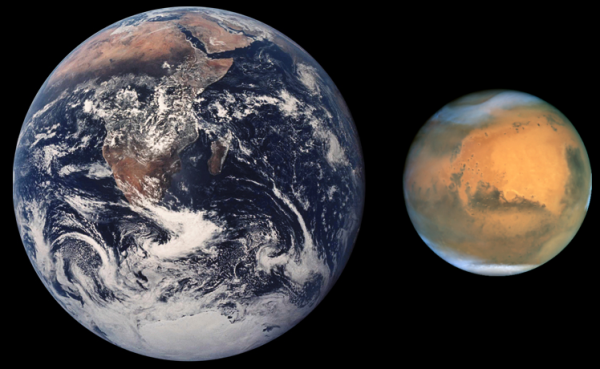
A new study on the solar system was able to uncover the mystery behind the massive size difference between Earth and Mars.
According to the scientists, this has something to do with the location of the two planets.
For the study, the scientists turned to a new process dubbed as planetary formation modeling to see how planets are created, Science Daily reported.
The scientists explained that planets of the same size go through a process known as accretion. This is when rocks merge with other rocks to form larger objects such as mountains. As the process continues, these mountains then merge with one another to form objects as large as cities.
This is the same process that led to the development of Earth and Venus. But based on the concept of accretion, Mars should have been as big as Earth. However, since the red planet only holds 10 percent of the Earth's mass, the unusual size difference has left researchers puzzled for years.
But, by following new calculations the scientists were able to observe the growth of a solar system starting from its inner region. Based on their findings, they were able to determine that the planets near this region grew to massive sizes due to a natural outcome known as Viscously Stirred Pebble Accretion.
Through VSPA, dust particles grow into pebbles with diameters of a few inches. Some of these then grow into objects as big as asteroids and pull more pebbles in through aerodynamic drag. Then, under the right conditions, these asteroid-sized objects can fuse with other planets growing through the accretion process.
As these objects merge, the planet eventually grows bigger within a relatively short period of time.
In the case of Mars, however, the location of the red planet does not have a strong aerodynamic drag to pull in pebbles. In other words, the conditions were not right for VSPA to fully occur.
The scientists noted that this is the same case with Ceres, the largest asteroid in the solar system's asteroid belt. With a diameter of 600 miles, it would have grown as big as Earth if it was near the planet's location.
"This means that very few pebbles collide with objects near the current location of Mars," co-author Bill Katherine Kretke of the SwRI's Planetary Science Doctorate said in a statement. "That provides a natural explanation for why it is so small."
"Similarly, even fewer hit objects in the asteroid belt, keeping its net mass small as well," she added. "The new mode predicts that the asteroid belt never contained much mass in bodies like the currently observed asteroids."
The report of the scientists was published on October 28 in the journal Proceedings of the National Academy of Sciences.














